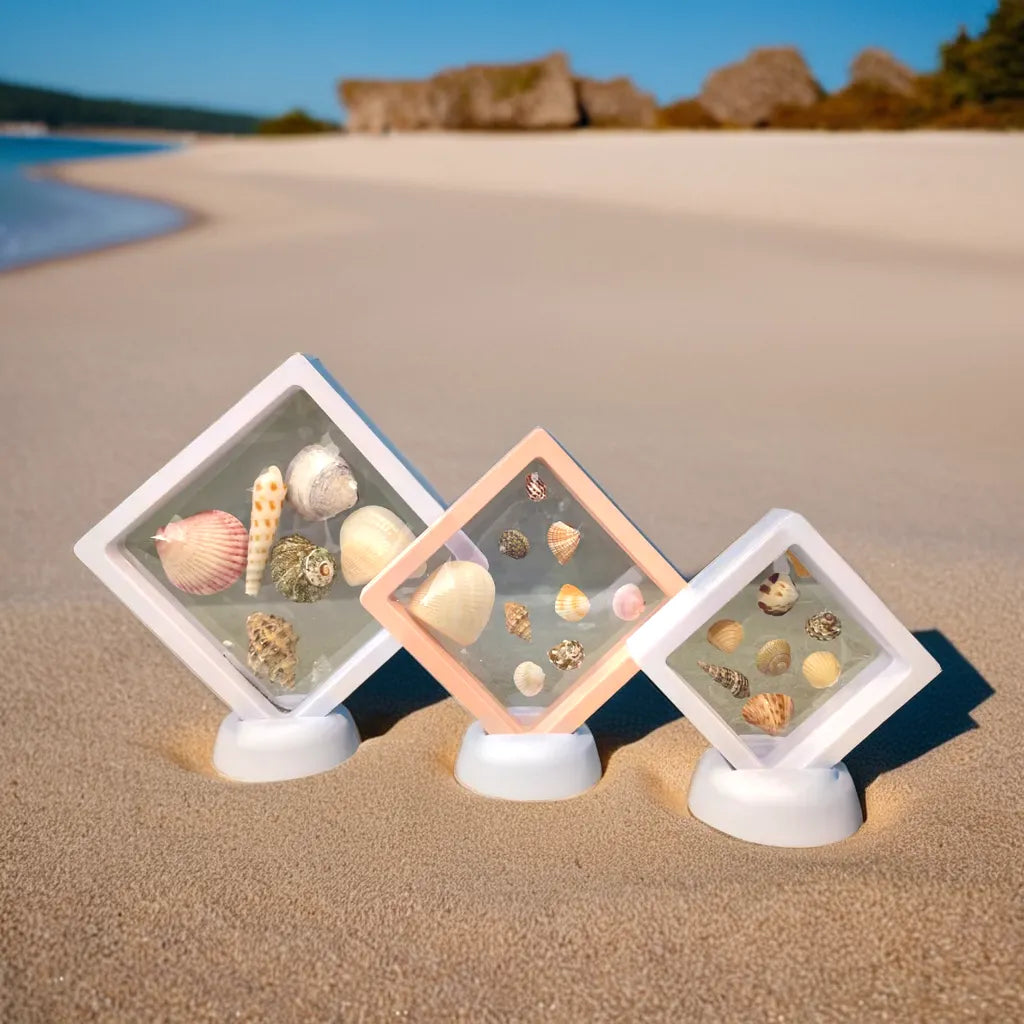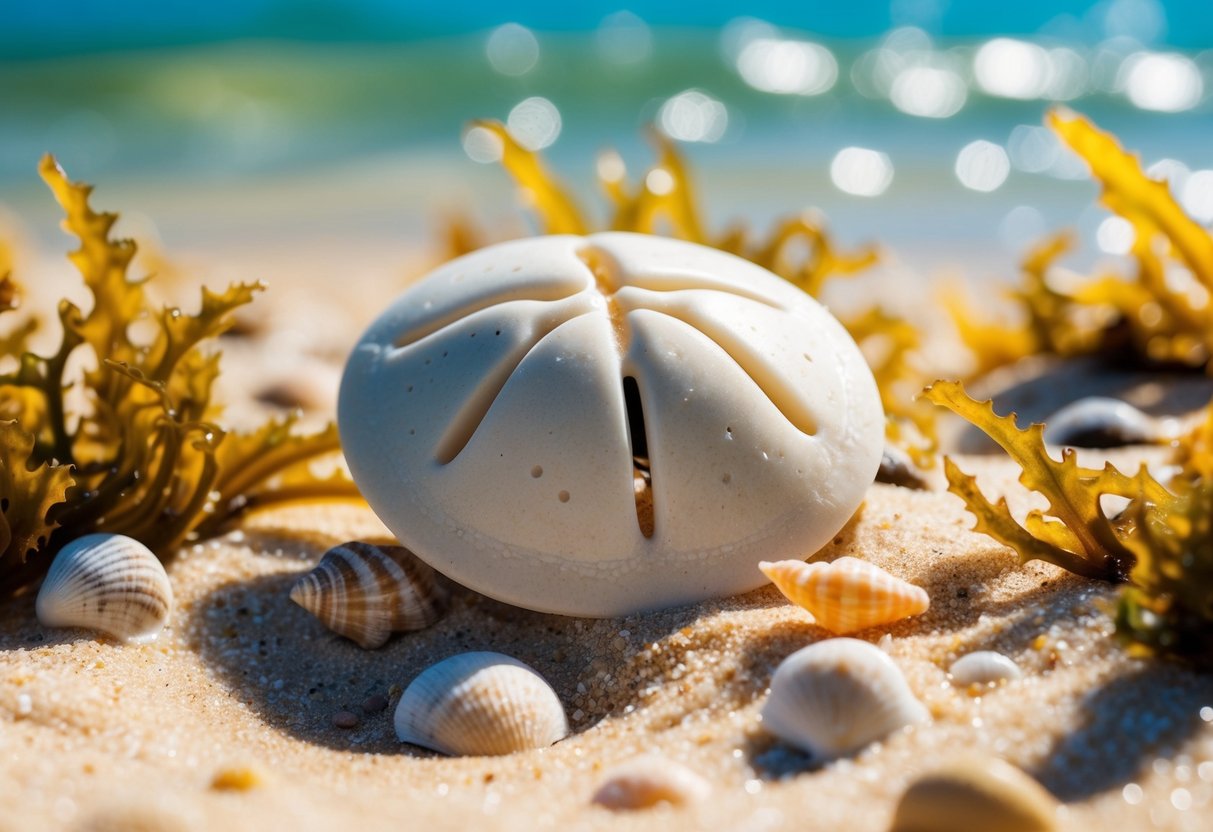Sand dollars are intriguing creatures found in sandy ocean floors, but they face many threats from predators. These include sea stars, crabs, and various fish that enjoy feasting on sand dollars. To survive in this challenging environment, sand dollars have developed special defense mechanisms that help them evade these hungry hunters.
 One remarkable method is through a unique form of self-cloning. The larvae of sand dollars can split themselves to confuse predators, making it harder for them to be caught. This asexual reproduction technique not only aids in survival but also demonstrates the fascinating adaptability of these organisms.
Understanding the relationship between sand dollars and their predators sheds light on the delicate balance within marine ecosystems. It also highlights the importance of conservation efforts to protect these essential species from human impact and environmental changes.
One remarkable method is through a unique form of self-cloning. The larvae of sand dollars can split themselves to confuse predators, making it harder for them to be caught. This asexual reproduction technique not only aids in survival but also demonstrates the fascinating adaptability of these organisms.
Understanding the relationship between sand dollars and their predators sheds light on the delicate balance within marine ecosystems. It also highlights the importance of conservation efforts to protect these essential species from human impact and environmental changes.
 Sand dollars are important marine animals that have unique ecological roles. They inhabit specific environments and have distinct physical features that help them survive.
Sand dollars are important marine animals that have unique ecological roles. They inhabit specific environments and have distinct physical features that help them survive.
 Sand dollars face several natural predators in their environment. These predators include various species such as starfish, certain fish, and crustaceans. Each of these animals has unique methods of hunting sand dollars.
Sand dollars face several natural predators in their environment. These predators include various species such as starfish, certain fish, and crustaceans. Each of these animals has unique methods of hunting sand dollars.
 One remarkable method is through a unique form of self-cloning. The larvae of sand dollars can split themselves to confuse predators, making it harder for them to be caught. This asexual reproduction technique not only aids in survival but also demonstrates the fascinating adaptability of these organisms.
Understanding the relationship between sand dollars and their predators sheds light on the delicate balance within marine ecosystems. It also highlights the importance of conservation efforts to protect these essential species from human impact and environmental changes.
One remarkable method is through a unique form of self-cloning. The larvae of sand dollars can split themselves to confuse predators, making it harder for them to be caught. This asexual reproduction technique not only aids in survival but also demonstrates the fascinating adaptability of these organisms.
Understanding the relationship between sand dollars and their predators sheds light on the delicate balance within marine ecosystems. It also highlights the importance of conservation efforts to protect these essential species from human impact and environmental changes.
Key Takeaways
- Sand dollars face predators like sea stars and crabs in their natural habitat.
- They can clone themselves as a way to escape from being eaten.
- Protecting sand dollars requires efforts to manage human impacts on their populations.
Overview of Sand Dollar Ecology
 Sand dollars are important marine animals that have unique ecological roles. They inhabit specific environments and have distinct physical features that help them survive.
Sand dollars are important marine animals that have unique ecological roles. They inhabit specific environments and have distinct physical features that help them survive.
Habitat and Distribution
Sand dollars are primarily found in shallow coastal waters around the world. They prefer sandy or soft-bottom habitats, which provide easy access for burrowing. These creatures often populate areas like:- Beaches: Where they can be found just under the sand.
- Estuaries: Where waters mix between fresh and salt, offering nutrient-rich environments.
- Coral Reefs: Providing both shelter and food sources.
Physical Characteristics
Sand dollars are flat, disc-shaped echinoderms that belong to the order Clypeasteroida. Their hard exterior, known as a test, is usually a pale color, often appearing gray or white. Key characteristics include:- Body Shape: They have a flattened, rounded shape that helps them move easily in the sand.
- Size: Most sand dollars range from 3 to 10 inches across.
- Secondary Features: The upper surface has tiny, fuzzy spines which are used for movement and sensing the environment.
Common Predators of Sand Dollars
 Sand dollars face several natural predators in their environment. These predators include various species such as starfish, certain fish, and crustaceans. Each of these animals has unique methods of hunting sand dollars.
Sand dollars face several natural predators in their environment. These predators include various species such as starfish, certain fish, and crustaceans. Each of these animals has unique methods of hunting sand dollars.
Starfish
Starfish are among the most significant predators of sand dollars. These echinoderms use their tube feet to cling to the sand dollar's surface. They then apply pressure to pry it from the substrate. Once dislodged, the starfish can consume the sand dollar. Some starfish species have specialized feeding techniques, such as extending their stomachs to digest prey outside their bodies. This method allows them to effectively break down the sand dollar's tough exterior.Fish Species
Certain fish species also prey on sand dollars. Fish like the Dover sole target sand dollar larvae. These fish use their keen sense of smell to locate sand dollars, often in shallow waters. Young sand dollars are particularly vulnerable to predation by fish. They may be ingested whole or attacked while they feed on plankton near the ocean floor. This risk forces sand dollars to adapt by employing defensive strategies.Crustaceans
Crustaceans, including crabs and lobsters, are known to attack sand dollars. These predators typically scavenge in sandy habitats, seeking out easy prey. Crabs, for example, can dig into the sand to reach buried sand dollars. Their strong claws can break through the sand dollar’s defenses. Lobsters also pose a threat when sand dollars are near rock structures, where lobsters hunt for food. These interactions demonstrate the delicate balance sand dollars maintain with their environment.Sand Dollar Defense Mechanisms
Sand dollars use various methods to protect themselves from predators. They have unique adaptations that help them evade threats in their environment. The most significant defense mechanisms include camouflage, physical structures, and burrowing behavior.Camouflage
Sand dollars possess a color and shape that allow them to blend into their sandy surroundings. Their disc-like bodies can easily match the color of the sea floor. This feature helps them stay hidden from predators like crabs and sea stars. They can also change position to align better with the sand, enhancing their disguise. This natural camouflage reduces the chances of being spotted. When undisturbed, sand dollars can remain invisible to animals that hunt by sight.Physical Structure
Sand dollars have a tough exterior that provides some protection against predators. Their bodies are covered in spines that can deter hungry animals. These spines can prick or irritate potential attackers, making it less likely for them to attempt to eat the sand dollar. Inside, sand dollars have small stinging cells on their tube feet. These cells can cause discomfort to predators, adding another layer of defense. The combination of tough skin and spiny features makes them harder to consume.Burrowing Behavior
A highly effective defense mechanism is their ability to burrow into the sand. When threatened, sand dollars can quickly dig into the bottom of the ocean. This action helps them hide from predators that might approach from above. Burrowing not only provides immediate safety but also serves as a long-term strategy. By remaining buried, sand dollars can avoid many potential threats. They can stay protected until conditions are safe for them to return to the surface.Reproduction and Predator Avoidance
Sand dollars have unique ways to reproduce while avoiding their predators. Their methods of reproduction are finely tuned to help protect them from threats in their environment.Reproductive Cycles
Sand dollars reproduce through a process called spawning. During spawning, they release eggs and sperm into the water. This usually happens in the spring and summer months when conditions are favorable. The larvae that hatch from these eggs are initially vulnerable. To combat this, sand dollar larvae can clone themselves when they sense danger. This cloning occurs when they encounter certain cues, such as predator mucus in the water. As a result, a single larva can split into two smaller larvae, increasing its chances of survival in a risky environment.Spawn Timing as Defense
Timing plays a crucial role in sand dollar reproduction. By spawning during specific periods of the year, they align their lifecycle with optimal conditions. This strategy reduces the likelihood of their eggs being eaten by predators. When sand dollars spawn in large numbers, they create a "predator swamping" effect. This means that not all larvae will fall prey to hungry animals at the same time. By overwhelming their predators with sheer numbers, they boost the chances that some will survive and grow into adults.Human Impact on Sand Dollar Populations
Human activities significantly affect sand dollar populations. Factors like collection for souvenirs and environmental changes pose threats to their survival. Understanding these impacts is crucial for their protection.Collection and Souvenir Trade
The collection of sand dollars for souvenirs is a common practice. Many people enjoy finding these unique marine creatures on the beach. However, removing sand dollars from their natural habitat can disrupt local ecosystems. When sand dollars are taken, it reduces their numbers, which affects the food chain. Many sand dollars are collected without consideration of their role in the environment. Over time, this can lead to population declines, making it essential for individuals and communities to promote conservation.Environmental Changes
Environmental changes also threaten sand dollar populations. Factors such as pollution and coastal development harm their habitats. Pollution from plastics and chemicals can directly affect sand dollars. Contaminants can impact their health and breeding patterns. Coastal development often leads to habitat loss. As beaches are altered, sand dollars lose their living spaces. Additionally, changes in water temperature and quality due to climate change can influence their survival. These elements are crucial to the ecosystem they support, and protecting their habitats is vital for their survival.Conservation Strategies
Conserving sand dollar populations is crucial for marine ecosystems. Effective strategies focus on habitat protection and pollution control. Key Conservation Strategies:- Habitat Protection: Preserving sandy areas where sand dollars live ensures they have a safe environment to thrive. This includes managing coastal development and reducing disturbance in these habitats.
- Pollution Control: Reducing pollution, especially plastic waste and runoff, is vital. Chemicals and debris can harm sand dollar larvae and adults.
- Research and Monitoring: Ongoing research helps understand sand dollar populations and their health. Regular monitoring can detect changes in their numbers or environments.
- Public Education: Raising awareness about sand dollars and their role in the ecosystem encourages community support for conservation efforts. Educated citizens can advocate for responsible beach practices and habitat preservation.
- Marine Protected Areas (MPAs): Establishing MPAs can help protect sand dollar populations from overfishing and destructive activities. These areas allow marine life to thrive without significant human interference.



























